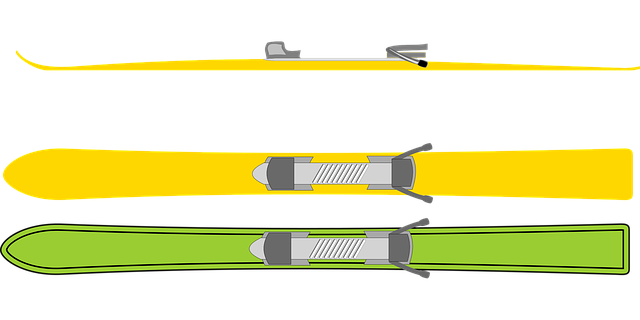Heat maps revolutionize fantasy sports by transforming complex player data into easily interpretable color-coded visualizations. These tools empower managers with insights for lineup optimization, enabling strategic decisions based on visual evidence. By identifying top performers and underperforming areas, heat maps enhance team performance and fan engagement, fostering a data-driven approach to gameplay.
Discover the transformative power of visualization heat maps in the realm of fantasy sports. This comprehensive guide unravels the secrets of unlocking valuable insights from complex data, empowering fans with strategic decision-making tools. From understanding the fundamentals to advanced analysis, we explore how visual representations enhance analytics, improve team building, and deepen fan engagement in fantasy sports. Uncover the magic behind heatmaps and elevate your gaming experience today.
- Understanding Visualization Heat Maps: Unlocking Insights for Fantasy Sports Fans
- The Power of Visual Representation in Fantasy Sports Analytics
- Creating Engaging Heatmaps: Tools and Techniques for Sports Data
- Interpreting Heatmap Data: Strategies for Successful Fantasy Team Building
- Real-World Applications: How Heat Maps Enhance Fan Engagement in Fantasy Sports
- Advanced Heat Map Analysis: Uncovering Hidden Patterns in Player Performance
Understanding Visualization Heat Maps: Unlocking Insights for Fantasy Sports Fans

Visualization heat maps are a powerful tool for fantasy sports fans looking to gain deeper insights into their teams and players. By representing data in a color-coded, visual format, these maps highlight trends and patterns that might otherwise go unnoticed. For instance, they can show which positions or players consistently perform well, helping managers make informed decisions about lineup choices.
For fantasy sports enthusiasts, understanding heat maps allows them to strategize more effectively. They can quickly identify top performers and underperforming areas, enabling them to adjust their teams accordingly. This data-driven approach enhances the overall experience, making it not just about enjoying the game but also about optimizing results.
The Power of Visual Representation in Fantasy Sports Analytics

In the realm of fantasy sports, where data and statistics play a pivotal role, visual representation techniques like heat maps offer a powerful tool for analysts and enthusiasts. These innovative methods allow fans to make strategic decisions by providing intuitive insights into player performances and trends across various stats. By mapping out complex data points on a color-coded scale, heat maps can highlight the hottest (or coldest) performers, making it easier to identify top talents and emerging stars.
This visual approach transcends the limitations of raw numbers, bringing fantasy sports analytics to life. Heat maps can reveal hidden patterns, such as consistent high scoring in specific positions or defensive strengths across certain teams. This level of visualization enables coaches, drafters, and enthusiasts to make more informed choices, ultimately enhancing the overall strategy and enjoyment of the fantasy sports experience.
Creating Engaging Heatmaps: Tools and Techniques for Sports Data

Creating compelling heatmaps is an art that has gained significant traction in the realm of sports analytics, particularly within fantasy sports communities. These visual tools allow for a deeper understanding of player performances and strategic trends. By mapping data points, such as pass completion rates, shot accuracy, or individual player contributions, heatmaps provide coaches, analysts, and fantasy players with an intuitive way to interpret complex statistics.
Advanced visualization software offers various techniques to enhance the engagement factor. Interactive heatmap creators enable users to drill down into specific moments, comparing performance across different parameters. For instance, a basketball coach might analyze a player’s shooting efficiency by zone, identifying hot spots and areas for improvement. Similarly, in fantasy sports, these tools empower participants to make informed decisions, optimizing their team strategies based on visual insights derived from heatmap analysis.
Interpreting Heatmap Data: Strategies for Successful Fantasy Team Building

Interpreting heatmap data is a powerful strategy for successful fantasy team building in fantasy sports. By visualizing player performance and statistics, heatmaps offer insights into who’s hot and who’s not. Identify peak performers highlighted by vibrant colors, indicating their consistent excellence. Conversely, dimmer areas suggest underperforming players or positions requiring reinforcement. This visual approach simplifies complex data, allowing you to make informed decisions when assembling your fantasy squad.
When analyzing heatmaps, focus on trends and patterns. Look for high-value players across multiple categories like points, rebounds, or assists in basketball, or yards, touchdowns, and interceptions in football. These patterns reveal well-rounded performers who can consistently contribute across the board. Additionally, compare player rankings within specific positions to identify undervalued gems who might offer a competitive edge in your fantasy league.
Real-World Applications: How Heat Maps Enhance Fan Engagement in Fantasy Sports

In the realm of fantasy sports, where statistics and performance data are abundant, visualization heat maps have emerged as a powerful tool to enhance fan engagement and strategic decision-making. These interactive graphics provide a clear and intuitive way to analyze complex patterns and trends within vast datasets. By assigning colors to different data points based on their intensity or frequency, heat maps offer a quick visual representation of the most significant areas of interest, making it easier for fans to identify key players, positions, or strategies that contribute to success.
For instance, in fantasy football, heat maps can illustrate player performance across various metrics like rushing yards, receiving scores, or defensive stops. This visualization enables fans to quickly compare players within their position groups and make more informed decisions when building their dream teams. Moreover, heat maps can be used to track team dynamics, uncovering correlations between specific lineups, strategies, or even in-game events and their impact on overall performance, thus fostering a deeper understanding of the game and driving more engaging fan experiences.
Advanced Heat Map Analysis: Uncovering Hidden Patterns in Player Performance

In the world of fantasy sports, where data-driven decision-making is king, advanced heat map analysis stands as a game changer. This powerful tool goes beyond basic statistics to uncover intricate patterns and trends in player performance. By visualizing data points as colored cells on a grid—with intensity reflecting significance—heat maps reveal hotspots and cold spots within a team’s roster.
For instance, a fantasy football manager might use heat map analysis to pinpoint the most consistent wide receivers or identify underperforming running backs. This granular insight enables managers to make informed decisions about player trades, lineup choices, and strategic adjustments. In today’s competitive fantasy sports landscape, leveraging advanced analytics like heat maps can be the difference between securing victory and settling for a mere respectable finish.






